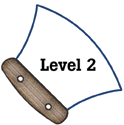
Alaska Science
Key Element C2
A student who meets the content standard should understand that scientific knowledge is validated by repeated specific experiments that conclude in similar results.
 |
Alaska Science A student who meets the content standard should understand that scientific knowledge is validated by repeated specific experiments that conclude in similar results. |
|
Performance Standard Level 2, Ages 8–10
|
|
|
|
Sample Assessment Ideas
|
Standards Cross-References
|
||
|
National Science Education Standards Scientists make the results of their investigations public; they describe the investigations in ways that enable others to repeat the investigations. (Page 123) Communicate scientific procedures and explanations. With practice, students should become competent at communicating experimental methods, following instructions, describing observations, summarizing the results of other groups, and telling other students about investigations and explanations. (Page 148) Science advances through legitimate skepticism. Asking questions and querying other scientists’ explanations is part of scientific inquiry. Scientists evaluate the explanations proposed by other scientists by examining evidence, comparing evidence, identifying faulty reasoning, pointing out statements that go beyond evidence, and suggesting alternative explanations for the same observations. (Page 148) |
Benchmarks Results of similar scientific investigations seldom turn out exactly the same. Sometimes this is because of unexpected differences in the things being investigated, sometimes because of unrealized differences in the methods used or in the circumstances in which the investigation is carried out, and sometimes just because of uncertainties in observations. It is not always easy to tell which. (Page 6) Results of scientific investigations are seldom exactly the same, but if the differences are large, it is important to try to figure out why. One reason for following directions carefully and for keeping records of one’s work is to provide information on what might have caused the differences. (Page 11) |
|
Table of Contents | Return to Alaska Native Knowledge Network